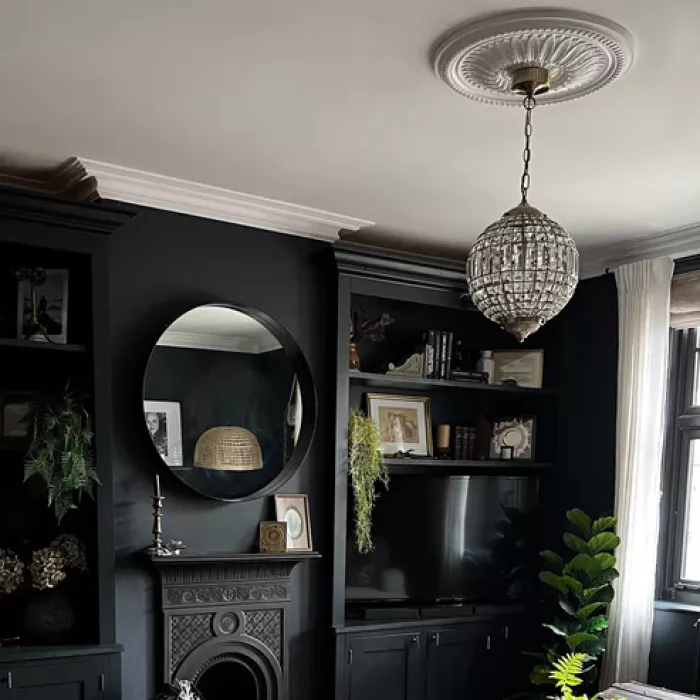Discover how coving transforms London interiors. Learn its design benefits, flexibility, installation tips, and how it can enhance property value.
Interior design in London, where history meets modern style, is frequently greatly influenced by the tiny, exquisite details. Coving is one such feature that has adorned the ceilings of opulent Victorian residences and now makes its way into contemporary flats and townhouses.
Often ignored, London Coving is the understated but elegant feature that can give any space harmony, personality, and appeal. Coving is the last touch every London room requires, whether you are modernizing a stylish home in Shoreditch or restoring a vintage property in Kensington (source).
Improving Architectural Character
London’s architecture is a patchwork of eras: Georgian restraint, Victorian ornament, Edwardian charm, and modern industrial flair. Coving helps define and enhance this character.
- In period homes, original plaster coving is often one of the most celebrated features, bringing depth and historical authenticity.
- In modern flats or renovations, sleek coving with clean lines adds refinement without overwhelming the design.
This architectural accent bridges the past and present, making even minimalist interiors feel more “complete.”
Designing Visual Harmony

Coving excels at creating visual balance. In compact London homes, it subtly draws the eye upward, creating an illusion of space and openness. It also acts as a unifying design element, especially valuable when mixing modern and traditional styles. A period fireplace, for instance, feels more integrated when paired with coving that echoes its historical detailing.
This same design strategy reflects broader principles explored in this breakdown of how branding and web design intersect. Just as consistent digital design choices elevate a brand’s identity, architectural coherence through features like coving creates a unified visual experience in interior spaces.
Design Flexibility
Coving comes in a variety of shapes and sizes to fit any space, from elaborate Victorian cornices to ultra-modern geometric lines. From ornamental designs for a magnificent living room in Mayfair to simple coving for a modern studio in Hackney, homeowners can select. Coving can even be painted to complement or contrast with wall and ceiling hues, thereby producing a bespoke style that improves your whole aesthetic.
From formal lounges and bedrooms to kitchens and hallways, coving is perfect for use in almost every space of the house because of its adaptability.
Increasing the Value of Your Property
In London’s competitive property market, small design enhancements carry weight.
- Well-installed coving signals quality, attention to detail, and care.
- Prospective buyers or tenants often associate coving with a more “finished” and sophisticated home.
- Despite its relatively low cost, it can elevate perceived property value and improve first impressions.
Coving is a modest investment with outsized visual and market benefits.
Simple upkeep and installation
Installing modern coving is simpler than ever. For homeowners who like taking on interior improvements, lightweight materials enable do-it-yourself installation. Professional installation guarantees that the coving complements current features and is fitted to perfection for more complex designs or period houses.
Usually, maintenance is simply a wipe-down and a sporadic coat of paint to keep it current.
Final Thoughts
Adding coving can be the easy yet important element that transforms your room from okay to great in a city as design-conscious as London, where every square foot counts. It not only enhances appeal and architectural intrigue but also gives any space a consistent and refined appearance.
Coving is the finishing touch you didn't know you needed, whether you're preserving a home's antique grandeur or giving a modern flat a delicate touch of refinement.
FAQs About Coving in London
1. What is the difference between coving and cornice?
Coving typically has a simple curved or angled profile and is used mainly to soften the transition between wall and ceiling. Cornices, on the other hand, are often more decorative and detailed, especially in period properties. In London homes, the two terms are often used interchangeably, but technically cornices are the more ornate option.
2. Is coving suitable for small London flats?
Yes. In fact, coving can make compact London flats appear larger by drawing the eye upward and creating a sense of vertical space. Choosing minimalist designs works best in smaller rooms to avoid overwhelming the space.
3. Does coving help hide imperfections?
Absolutely. Coving is often used to conceal cracks, uneven ceiling edges, or messy paint lines. It creates a polished, seamless finish, which is especially valuable in older London properties where walls and ceilings may not align perfectly.
4. Can coving be used with modern lighting?
Yes. Many homeowners in London now install LED strip lighting behind coving, creating ambient “halo” effects. This combines traditional detailing with modern functionality and works especially well in open-plan living spaces.
5. What materials are best for coving in London homes?
Plaster: Traditional, ideal for period properties, highly durable.
Polyurethane / Polystyrene: Lightweight, affordable, and DIY-friendly.
Wood or MDF: Sometimes used for bespoke finishes but less common.
The choice depends on your budget, property type, and whether you want DIY or professional installation.
6. Is coving fire-resistant?
Plaster coving is naturally fire-resistant, making it suitable for period homes with strict restoration guidelines. Lightweight coving (polystyrene) is less resistant but still safe if installed properly and painted with fire-retardant paint.
7. How long does it take to install coving?
DIY installation of lightweight coving can take a few hours for a single room.
Professional installation of plaster coving in larger London homes may take 1–2 days, depending on the complexity of the design.
8. Can coving be removed if I change my mind?
Yes, but removal can leave marks or uneven surfaces on walls/ceilings. Professional removal and re-plastering may be required if you want a completely smooth finish afterward.
9. Does coving work with modern minimalist interiors?
Yes. Many modern London apartments use simple linear coving that blends seamlessly into the architecture. When painted in the same colour as walls/ceilings, it provides subtle elegance without feeling traditional.
10. Can coving be installed in kitchens and bathrooms?
Yes, but in high-moisture areas it’s best to use moisture-resistant coving materials and ensure proper sealing and painting. This prevents warping or mould over time.
Post Comment
Be the first to post comment!





